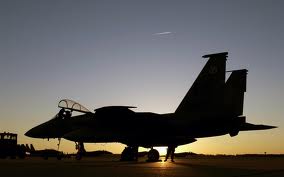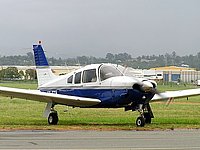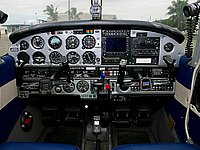 As a financial markets professional in the fast paced world of foreign exchange trading I must say one of the most enduring lessons I have learnt is an old adage that has served me well – “plan the trade and trade the plan.”
As a financial markets professional in the fast paced world of foreign exchange trading I must say one of the most enduring lessons I have learnt is an old adage that has served me well – “plan the trade and trade the plan.”
Mind you, a career in financial markets was not always goal my and as a young school boy growing up in Townsville, Australia, I frequently looked out the school window to watch the military aircraft landing at Garbutt airbase.
Townsville is a military town and home to a large contingent of air-force and army personnel.
 My heart was set on a career in the air force flying aeroplanes.
My heart was set on a career in the air force flying aeroplanes.
Of course, in reality, very few people get to achieve that dream. Mine was cut short when I discovered at the air force medical that I shared an impairment common in males, colour deficiency.
Over the years it has been graded as moderate to severe, seemingly dependent on what test was being given, and who was interpreting the result.
Naturally it was hard to accept that something totally outside of my control had cut short a potential military flying career.
 As the years passed, I decided that it was time to look back at my goal of flying aircraft and in 1994 I gained my Private Pilot’s licence and purchased an aircraft.
As the years passed, I decided that it was time to look back at my goal of flying aircraft and in 1994 I gained my Private Pilot’s licence and purchased an aircraft.
Being a methodical planner and risk manager, I relished the task of planning trips; although many didn’t come to pass because of my conservative approach.
In fact, many people both within the flying fraternity, and outside of it, congratulated me on this approach, but of course hidden within this seemingly good trait was a dangerous flaw.
Eventually it bubbled to the surface, with almost tragic consequences.
Many years ago I planned a flight from Sydney to Melbourne to visit a family member who had just given birth to their first child. The flight was planned under the Visual Flight Rules (VFR), which requires you to stay clear of cloud at all times.
 The flight path was programmed in the aircraft’s global positioning system (GPS), and on auto-pilot this would guide the aircraft.
The flight path was programmed in the aircraft’s global positioning system (GPS), and on auto-pilot this would guide the aircraft.
The weather was to be fine for the first stage of the flight, with some showers developing along the mountain ranges closer to Melbourne.
As I was approaching the half-way point of the flight I made the required radio calls for clearance through a particular control area.
The air traffic controller gave me the necessary clearance with a word of caution. There were showers on the western side of the ranges and I would most likely encounter these along my route.
Would I like to consider diverting around the weather as the skies were clear not too far to the west of my planned route?
I took the time to process this suggestion, after all the weather ahead still looked okay, despite what I was being told, and I would always have the option to backtrack, or divert should conditions become unacceptable for VFR flight.
Of course, what really was happening was a reversion to the “plan the trade, and trade the plan” lesson learned all those years ago.
I had planned this flight immaculately, it was in my GPS, it would be a hassle to change, and besides sticking with a well thought out plan had always served me well, I rationalised in my mind.
Perhaps that might have been a reasonable decision to make if experience was on my side, and if I had the capacity to not only realise when the flight along the planned route was no longer acceptable, and only if I was capable of acting immediately once realised.
I informed the controller I would be continuing as planned, to which he put the question one more time – would I like to divert to where the weather was fine.
He’d now asked twice, he was covered in the event this all went wrong!
 The cloud base was lowering as I got closer to Melbourne and I had to continually descend to the aircraft, dangerously low, to remain clear of cloud.
The cloud base was lowering as I got closer to Melbourne and I had to continually descend to the aircraft, dangerously low, to remain clear of cloud.
In an instant the weather deteriorated significantly and not surprisingly in the most mountainous region of the flight.
I was now confronted with the possibility of doing a precautionary landing, which was not without its risks, and I was looking fervently out the window for a place to do this. There wasn’t one, I was in the mountains!
In any case, I don’t believe I was fully committed to this action.
The second flaw was now kicking in, a failure to act.
Seemingly I was delaying any action in the hope luck would be on my side.
I could almost touch the tops of the mountains; I was only moments from a disaster, from being a statistic.
I contacted the air traffic controller handling arrivals into Melbourne, and was given clearance to track towards the airport. The weather had improved slightly and as I tracked west it cleared into a fine day, highlighting that had I amended the flight as suggested earlier it would have been much safer and certainly less stressful.
I have frequently looked back at this flight as a defining moment on many levels.
It encouraged me to go on and obtain an instrument rating to enable flight in cloud, providing a higher level of safety in these situations.
But importantly, it demonstrated to me that I was very inflexible once I had planned something.
It may have saved me and my employer a lot of money over the years, a product of “planning the trade, and trading the plan”, but this inflexibility has no place in an aircraft cockpit, and of course it almost cost me my life on this particular day.
An invaluable lesson was learned, one that I’ve thought about each and every day since…
The flaw is still there as it is a personality trait; I just need to keep it in check…
And as I head to the mountains it is forefront of mind and as part of my mountaineering training I am focussing heavily on my “human frailty”.
What traits do you have that work in some situations, but could have dire consequences in others?
Footnote: I have logged in excess of 1,000 hours as a pilot…and jumped out of them frequently! The aircraft pictured and the cockpit shot is of the aircraft we purchased.
